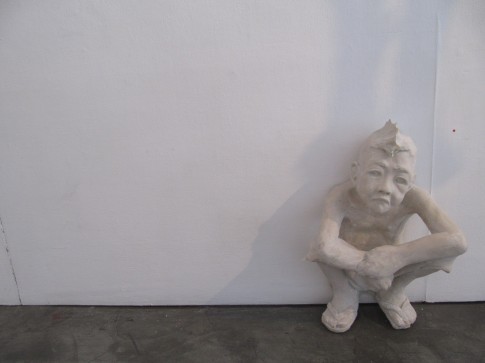TEDx Talks are independently organized TED talks across the world, which is about “riveting talks by remarkable people.” TEDx Diliman was my first. This is a review of each of the TED talks that were part of it, done in 18 minutes or less, because that’s the time limit of a TED Talk. Read more about TED here, and check out this really good video on TEDx here.
Glecy Atienza on Buhay: Theater for Life
what Ma’am Glecy had going for her TEDx talk were two things: (1) a life lived in theater, and (2) a theater life that has actually affected change in the spaces it has inhabited. these two should be in every TEDx talk, these are its most basic requirements. but also Ma’am Glecy had an anchor here, something that was the premise of and what drove her whole talk: theater as something that evolves from buhay (life) to buhay (live). i’d argue with that last one and say that it might have worked better had she used the term “alive” but that’s really just a matter of style. what’s important is that Ma’am Glecy allowed this concept to function not just as anchor, but as central idea that’s also a clear assessment not just of theater, but of her life lived within it.
this is what a TEDx talk requires, doesn’t it? because an idea worth sharing is not one that we pluck out of thin air, nor is it the stuff of just dreaming. an idea worth sharing is one that has been proven to work, one that has affected change in some form or manner, one that has, in the course of its existence come to terms with what needs to be done in order to reach a goal that’s about change of some form.
here Ma’am Glecy asserts that in the course of her years in theater, the notion of actor has since evolved for her: she is also artist, who does her own research, who teaches, who organizes communities around theater productions that can change the way they view their lives, the way they might see themselves. here, it will be difficult to question Ma’am Glecy’s assertions about the possibilities of change through theater, and this is precisely because she knows exactly from where she speaks.
but too, what Ma’am Glecy proves here is that it is not just years that a TEDx talk requires, it is more importantly about being self-reflexive and self-aware, where one’s limitations are clear, but even more so one’s ability at compromise, and role in change. these are the kinds of things we might all learn from, because these things are premised on concrete change done within real conditions of nation.
in the end, Ma’am Glecy would be one of the few who actually had proof of how art and culture can change our world, which was the TEDx Diliman theme. she would, in the end, be one of three people who’d do that here.
out of 11 speakers. go figure.


